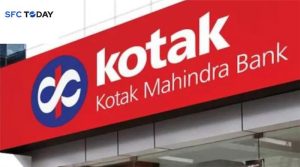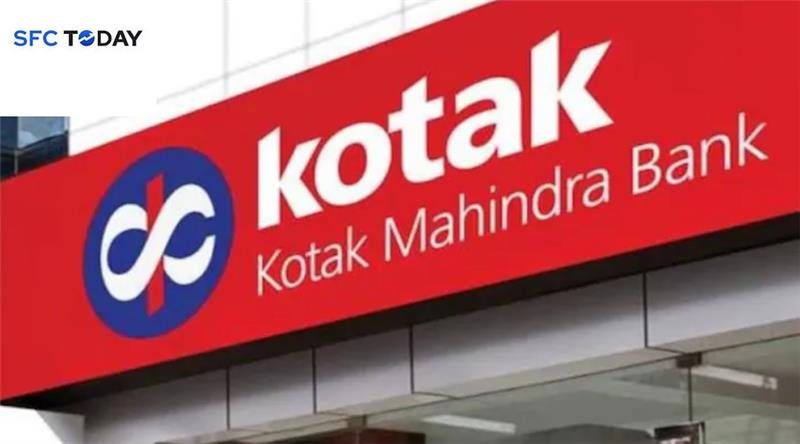Margins compress, provisions surge—signaling a cautious banking shift
Kotak Mahindra Bank’s fourth quarter results for the financial year 2024–25 present a nuanced narrative of resilience, cautious growth, and shifting industry dynamics. The bank’s performance reveals not only its internal strategic recalibrations but also offers insight into larger trends currently redefining the Indian banking sector. A 14% year-on-year decline in net profit, expanding provisions, and compressed margins point toward the evolving risk appetite and recalibrated business models of private banks in a post-pandemic, high-interest-rate environment.
Profit Declines Despite Loan and Deposit Growth
For the quarter ended March 31, 2025, Kotak Mahindra Bank posted a standalone net profit of ₹3,552 crore, marking a 14% decrease compared to ₹4,566 crore in the corresponding quarter of FY24. This contraction comes despite a strong uptick in core banking activities—loans and deposits both registered double-digit growth. Advances rose 13% year-on-year to ₹3.77 lakh crore, while deposits increased 15% to ₹4.08 lakh crore.
The profit drop is primarily attributed to a significant surge in provisions and contingencies, which rose to ₹909 crore in Q4 FY25—more than three times the ₹306 crore reported a year ago. This sharp rise in provisioning indicates a conservative stance adopted by the bank amid concerns over asset quality, potential stress in unsecured lending, and macroeconomic uncertainties.
NII Growth Slows, Margins Compress
Net Interest Income (NII), a key metric indicating core income from lending, increased by 5% year-on-year to ₹7,284 crore in Q4 FY25. While this marks a positive trend, the pace of growth is slower compared to earlier quarters, reflecting a tightening interest rate spread. The Net Interest Margin (NIM) declined sharply to 4.97% from 5.28% in Q4 FY24, and also down from 5.22% reported in Q3 FY25.
This margin compression can be attributed to a shift in the bank’s lending portfolio, with a larger proportion of loans now linked to external benchmarks such as the Repo rate. As a result, yields on advances remain under pressure while the cost of deposits has steadily increased in a rising rate environment. Additionally, the aggressive push toward retail term deposits to maintain liquidity has further weighed on margins.
Asset Quality Trends Show Controlled Risk
Despite increased provisioning, Kotak Mahindra Bank’s asset quality remains healthy. The gross non-performing assets (GNPA) ratio improved marginally to 1.42% as compared to 1.50% in the previous quarter. The net NPA (NNPA) also declined to 0.31% from 0.36%. These figures indicate that the bank continues to exercise disciplined credit underwriting and efficient recovery mechanisms, even as it braces for potential economic headwinds.
Slippages during the quarter remain under control, and the restructured loan book has not seen any significant deterioration. These trends point to strong risk management practices and selective credit expansion strategies.
Fee Income, Operating Expenses, and Digital Push
Total income, including other income, increased modestly, aided by healthy fee-based revenue from distribution, advisory, and transaction banking services. However, operating expenses also rose during the quarter, partly driven by higher technology spends and continued branch expansion efforts.
The bank’s digital transformation remains a core focus area. Digital channels now contribute significantly to customer acquisition, loan disbursals, and deposit mobilization. Kotak Mahindra Bank has also ramped up investments in AI and automation, particularly in fraud detection, analytics-driven loan underwriting, and personalized banking experiences. These strategic investments, while elevating short-term costs, are expected to drive long-term operating leverage and customer retention.
Capital Position and Return Metrics
Kotak Mahindra Bank continues to maintain a robust capital position. The Capital Adequacy Ratio (CAR) as per Basel III norms stands at 22.2%, well above regulatory requirements. The Tier 1 capital ratio remains strong at 21.4%, providing ample headroom for growth and credit expansion.
Return on Assets (RoA) declined to 2.08% from 2.56% in Q4 FY24, primarily due to profit moderation. Return on Equity (RoE) also softened to 12.9% from 15.4%. These ratios reflect the impact of higher provisioning and operating expenses, although they remain competitive compared to peers in the private banking space.
Subsidiary Performance and Consolidated View
Kotak Mahindra Group’s consolidated net profit for Q4 FY25 came in at ₹5,304 crore, down from ₹5,857 crore a year ago. The bank’s subsidiaries across asset management, life insurance, general insurance, and securities brokerage continued to contribute meaningfully to consolidated earnings, though growth was uneven.
Kotak Securities witnessed pressure on brokerage income due to lower retail trading volumes, while the asset management arm reported steady inflows and improving profitability. The life insurance segment saw premium growth but was impacted by higher claims and provisioning.
Strategic Context and Industry Trends
The bank’s Q4 results must be contextualized within a broader industry backdrop marked by tightening monetary policy, rising input costs, and moderating credit demand. The Reserve Bank of India’s policy stance remains data-dependent, and any future rate adjustments will significantly impact interest rate spreads across the banking sector.
Retail lending, particularly in unsecured personal loans and credit cards, has come under closer regulatory scrutiny. Kotak Mahindra Bank’s cautious provisioning and moderate loan growth strategy reflect a proactive approach to managing these emerging risks.
The shift from high-yield unsecured lending to secured and granular segments like home loans, SME financing, and vehicle loans is becoming a dominant trend across private sector banks. Margin compression is also forcing banks to focus more on cost efficiencies, digital channel optimization, and fee-based income streams.
Leadership Transition and Corporate Governance
Another key development shaping investor sentiment is the recent leadership transition at Kotak Mahindra Bank. With Uday Kotak stepping down from the CEO role and the appointment of a new MD & CEO, the bank is entering a new strategic phase. The management has reiterated its commitment to continuity, risk discipline, and digital-first growth under the new leadership.
Market participants continue to monitor how the new executive team navigates competitive challenges, cost management, and compliance expectations. The ongoing transformation agenda, which includes modernization of core banking infrastructure and deeper penetration in semi-urban markets, is expected to shape future earnings trajectories.
Investor Reactions and Share Performance
Kotak Mahindra Bank’s Q4 results triggered a mixed reaction in the equity markets. The stock opened lower following the earnings announcement but recovered modestly during intra-day trade. Analysts interpret the results as a reflection of short-term margin headwinds rather than a structural deterioration.
Brokerages have maintained a “hold” or “neutral” rating on the stock, citing strong asset quality and capital adequacy as positives, while expressing caution over margin outlook and subdued profit growth. The medium- to long-term view remains constructive, especially if the bank sustains its focus on cost control, digital scaling, and stable credit quality.
Kotak Mahindra Bank’s Q4 FY25 results encapsulate the delicate balancing act that Indian banks are currently undertaking—pursuing growth while reinforcing risk buffers in an increasingly uncertain economic landscape. The decline in profitability, despite strong operating metrics, points to a more conservative and forward-looking banking strategy.
The results are emblematic of larger shifts within the industry—margin pressures, increased provisioning norms, regulatory adjustments, and the digital transformation imperative. As such, Kotak Mahindra Bank’s Q4 performance not only marks a transitional phase in its own journey but also serves as a leading indicator of how private banks are recalibrating to thrive in a changing financial environment.



